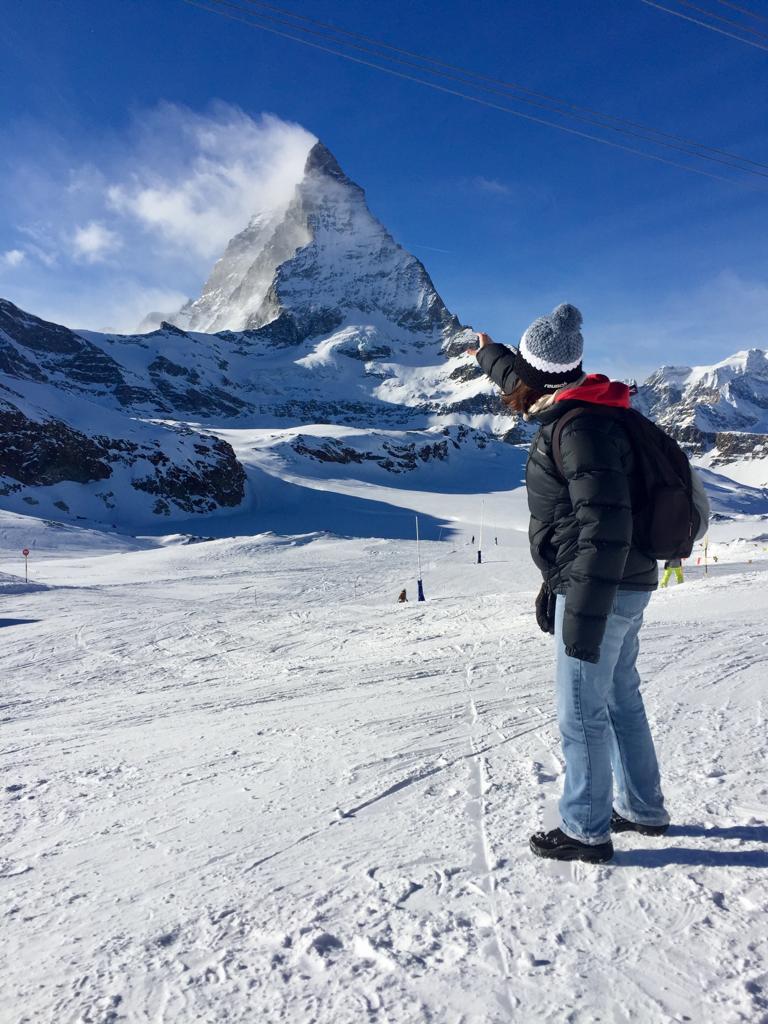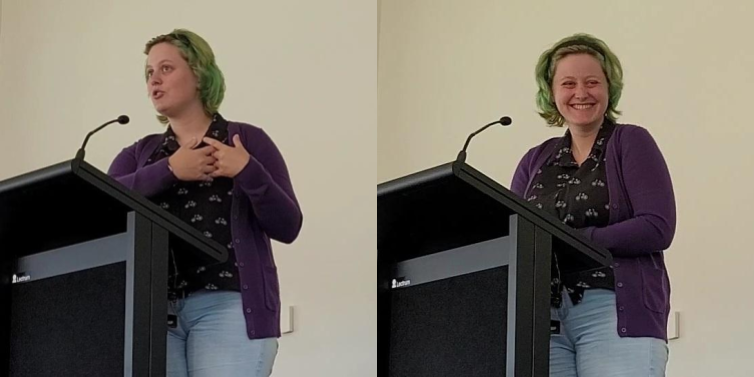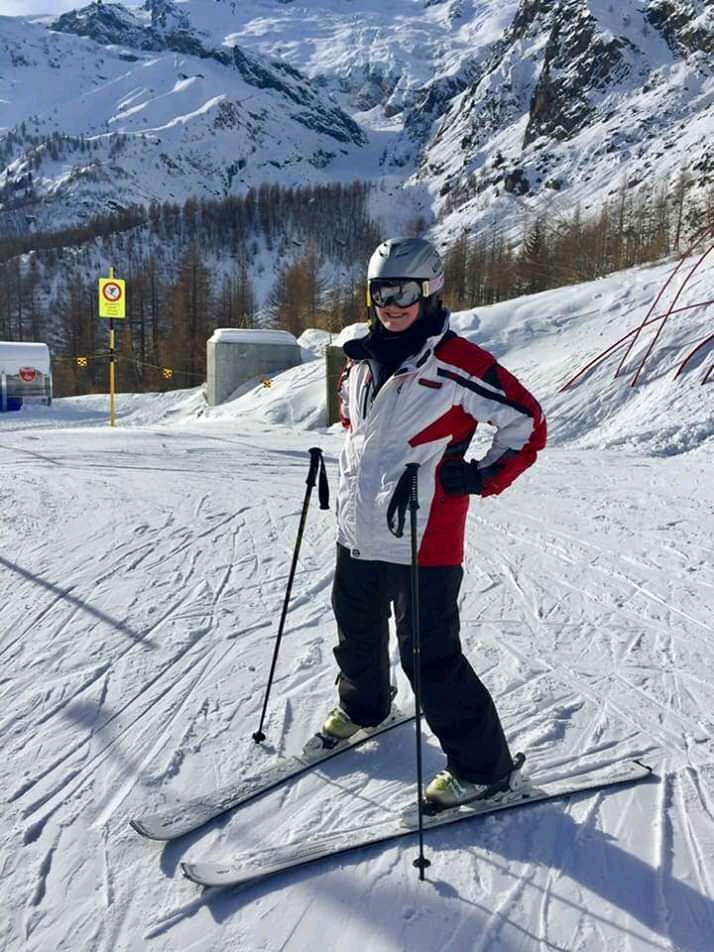My goal for Bike Month 2023 was straightforward: to bike to work every day for the whole month (I am usually a work-from-home type of gal). It did not last long.
On 3 February 2023, I was hit by a driver on Pukete Road on my way to work.
On this very special of anniversaries (yay, Bike Month 2024!), I want to share my story. Spoilers: I lived, and though I was injured, my resolve remains as strong as ever.
Beware the Left Hook
The New Zealand Road Code clearly states that all turning traffic must give way to non-turning traffic. In practice, however, traffic turning left does not have anyone to give way to since there is typically nobody travelling straight in a way that would conflict with somebody turning left – unless there is a bike lane.
Bike lanes are typically placed to the left of the principal roadway. Therefore, traffic turning left will turn across the bike lane.
Since people in the bike lane are not turning, motor traffic must give way. The danger is that people driving may not be aware that there is non-turning traffic to their left for which they need to watch out.
When motor traffic fails to give way to people on bikes when turning across the bike lane, this is called a ‘left hook turn’ (Footnote 1).

This is what happened in my case.
I was travelling straight along the bike lane on Pukete Road heading towards Te Rapa Straight. A driver decided to turn left across the bike lane into Beaurepaires as I was approaching. They decided not to use their indicator, which meant I had no warning they were going to turn. It had been raining the previous night, so unfortunately, the road surface was wet; I was unable to stop in time. I collided at almost full speed into the side of the car and was knocked to the ground.

Shiny New Helmet
To the driver’s credit, the first thing he asked me was: “Are you okay?”
Unfortunately, after I answered in the affirmative, the second thing he said was: “You shouldn’t have been there. I was turning.”
Either the driver was unaware of an approaching bicycle, which means he was not paying attention, or he was under the impression that he had the right of way as a vehicle. He was wrong on both counts. Not only does turning traffic have to give way to all non-turning traffic, as discussed above, but drivers must always give way to people on bikes when crossing a bike lane.
“A driver may also drive wholly or partly in a lane that is unavailable to the driver [such as a cycle lane] if the driver gives way to vehicles entitled to use the lane.”
– Land Transport (Road User) Rule 2004, s 2.3(4)c; see also definition of “Special Vehicle Lane”
“A driver changing lanes or about to change lanes, or turning or about to turn, must give way to any vehicle not changing lanes, or not making a turn.”
– Land Transport (Road User) Rule 2004, s 4.2(2)
I landed heavily on my knee, giving me an impressive scrape that bled down my leg; I also landed on my palm, though the scrapes there were not as serious. The most concerning matter, however, was that I had landed somewhat on my head, sparking concern that I may have suffered a concussion.
The driver helped me with initial first aid, including bandaging my bleeding leg. I called for an ambulance which took me to Tui Medical for a checkup, during which a doctor confirmed I was not concussed. I earned a few days away from work for my trouble.

Not only do I consider myself lucky for avoiding a concussion, but I consider the driver lucky that nothing was damaged except for my helmet. I was carrying my work phone and laptop with me at the time, as well as, of course, all my bike gear. I am not sure my office would have been pleased with having to chase up some guy to cover new devices after trying to run over one of their employees.
The process for replacing my helmet was luckily straightforward, and the driver complied without complaint. My local bike shop provided an estimate for a replacement of the same value, which I passed on to the driver, who paid the amount to the shop where I was then able to pick it up.

Luckily, I Was Injured Enough
All accidents involving motor vehicles or injuries on the road are required to be reported to the New Zealand Police. The funniest part of this process was filling out my vehicle type, colour, and registration (push bicycle, orange, and not applicable).
“If the accident involves an injury to or the death of a person, the driver or rider must report the accident to an enforcement officer as soon as reasonably practicable.”
– Land Transport Act 1998, s 22(3)

Like all contemporary public service organisations, the Police are underfunded and understaffed. The bulk of this story is for another time; the relevance here is that nobody got in touch with me for over a month.
Finally, I received a call on 23 March 2023. During this time, a case manager confirmed my side of the story and the details of the driver so he could be contacted as well. I was told that the likely outcome would be an infringement fee of $130 for ‘Failure to Give Way’ (Footnote 2). I asked how long his licence would be suspended. According to my case manager, the driver did not meet the threshold for licence suspension; apparently, the only reason my case was being investigated at all was because I was injured, but even so, I was not injured enough to warrant undertaking the process to remove a licence, which I was told involved the courts.
This was fascinating to me. A licence is in effect a certification from the Government that someone is knowledgeable in the rules of the road and is capable of observing them; that is why driving examinations require both a theoretical and practical element. Why don’t we suspend the licences of those who demonstrate that they are not knowledgeable about the law, not capable of driving safely, or both? Especially when that demonstration involves injuring vulnerable road users?
We know that injuries involving people on bikes are underreported to New Zealand Police – up to seven times based on data from 2020. This means that for each incident that is reported to the Police, seven incidents that go unreported. A study of American bicycle commuting from the journal Accident, Analysis & Prevention (75) corroborates this finding and additionally finds that near misses – situations where someone is nearly involved in a crash but manages to avoid it – are more strongly associated with traffic risk than actual collisions. These are the risks that are invisible to the system but so keenly felt by the public. When we only investigate crashes that involve injury to a vulnerable road user, we are implicitly legitimising the behaviour that does not result in injury – near misses – which are the most likely to deter people from biking.

Driving is unfortunately embedded in our society; in many ways, driving is a prerequisite to taking part in social events, jobs, and daily life. The result of this is that taking away the right to drive is more or less the same as taking away the ability to participate in society. Suspending a drivers licence is therefore perceived as a disproportionate consequence; what offence could ever justify removing your ability to engage with your community? The Police are therefore incentivised to not suspend licences, which means that there are a lot of people on the road who do not drive to an acceptable minimum standard.
We accept road accidents almost without question. We hardly think about the danger presented by driving; this is even clear in the word that we use to describe it: accident. The great philosopher Edgar Wright said in his masterpiece Hot Fuzz: “[Calling it an accident] implies there’s nobody to blame.” An accident is something that happens; whereas a collision is something that we make happen. We conceptualise car crashes as things that happen without cause. We do not conceptualise them as the result of behaviours, usually negligent behaviours, which can have disastrous consequences.

I do not believe that anybody sets out to injure someone on their way to work, but if you turn across a bike lane without looking for someone on a bike, then you are trying to hit someone.
That is why it is important to me that I use active language when I talk about what happened. I was not ‘involved in a car/bike accident’. I was not even in a ‘collision’. I was hit by a car; rather, I was hit by a driver (Footnote 3).
I waited another month before getting back in touch with the Police. A call centre advisor told me that my case had been closed, but she was unable to tell me the resolution because it was considered personal information. I needed to submit an OIA (Official Information Act) request, which was finally resolved several months later. The driver was indeed fined, and I could close that chapter of my life.
Final Reflections
I am doing a lot of complaining here, but I also want to acknowledge a few positive outcomes.
Firstly, as far as getting hit by a car goes, this was ideal. I was not seriously injured, my bike and my work gear was all in one piece, and the driver helped me and replaced my gear without complaint. I also got a long weekend, which was a small silver lining.
I also want to thank everyone who helped me. From the friend whom I called for help and left her phone on all day just in case I needed it, the family friend who drove me and my stuff home, my manager who handled everything at work while I was otherwise occupied, and of course the ambulance officers who transported me to Tui Medical and the bike shop staff who helped me replace my helmet. Nobody is an island, so thank you for being there when I needed you.
I hope that you can get something from my story and musings. If you are primarily a driver, I hope my story teaches you to pay attention around bike lanes and avoid left hook turns. If you are primarily a cyclist, I hope this can serve as a resource if you are unfortunate enough to be involved in a similar situation. I was not the first person to be hit by a driver, and I will not be the last.
As a result of my good luck and the support I received, I was back on my bike by 6 February 2023, and I managed 355 kilometres over the rest of Bike Month.

Footnote 1. This is in contrast to the ‘right hook turn’, which is a technique that allows people on bikes to make a right-hand turn at a signalised intersection without needing to change lanes to the right-turn lane (which may be challenging if there are multiple lanes of through traffic). This is an article for another time.
Footnote 2. According to Waka Kotahi, he would have also received 20 demerit points on his licence. Driver licences are automatically suspended for three months if more than 100 demerit points are accumulated within two years. This means that this driver would need to hit four more people on bikes – as well as have those collisions reported to the Police – before they are disqualified from driving.
Footnote 3. Obviously, the driver did not get out of their car and punch me, but a car does not operate on its own. It does as it is directed by a person.





Leave a comment